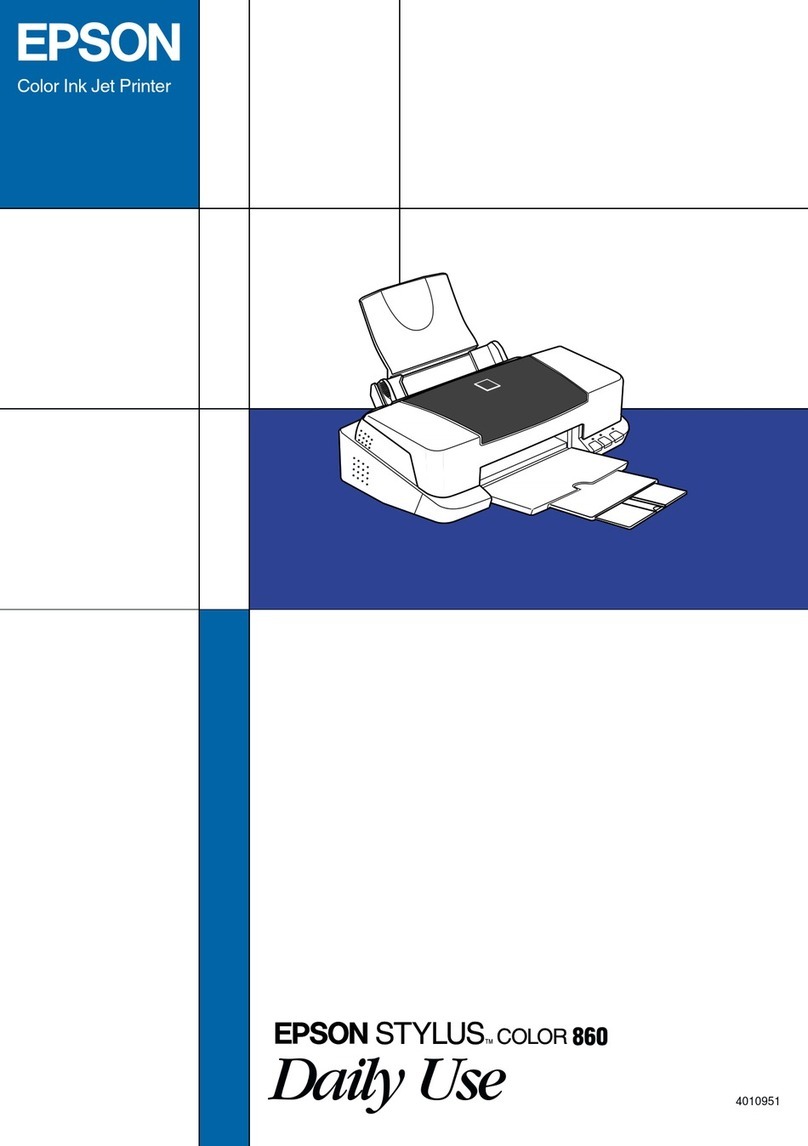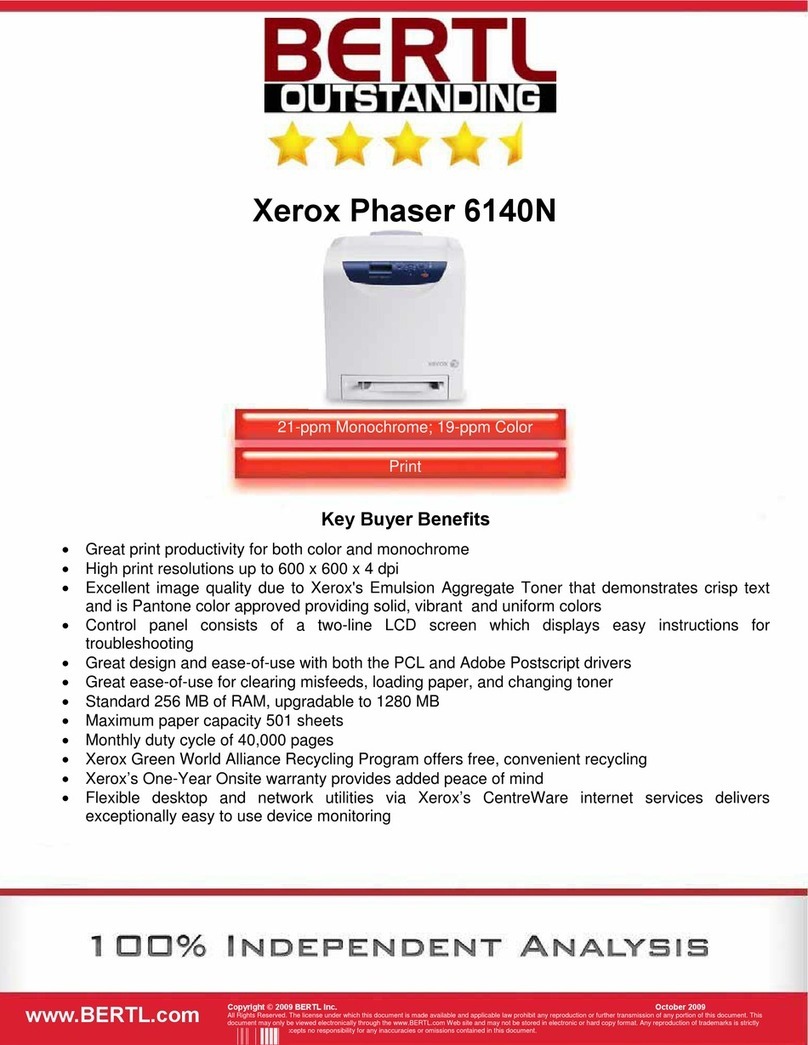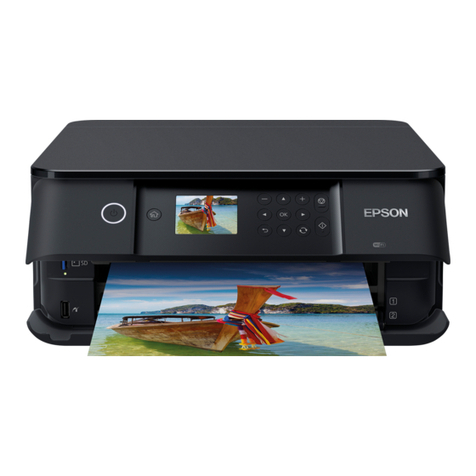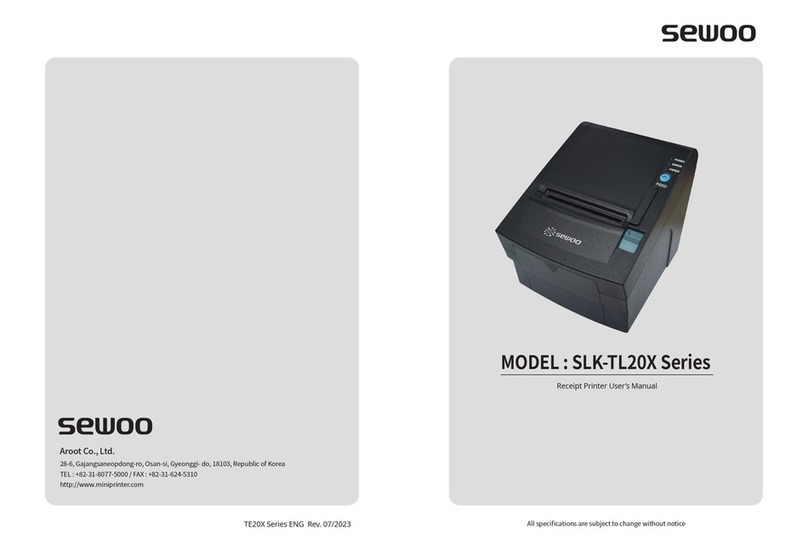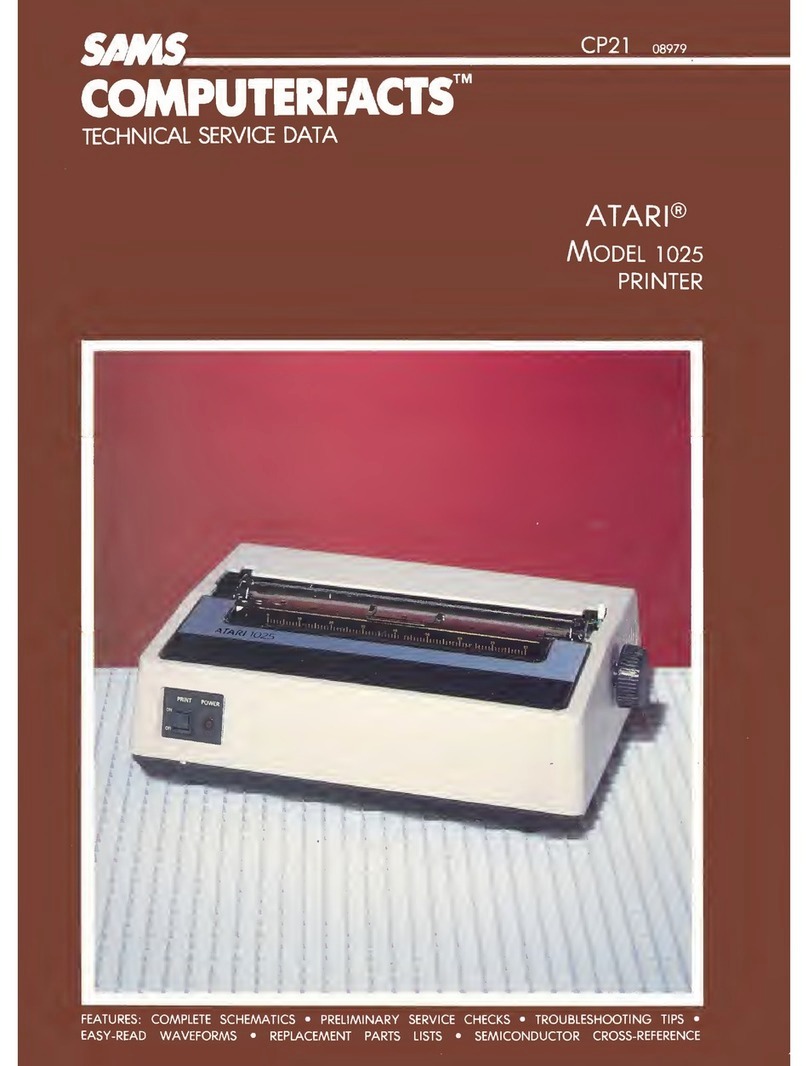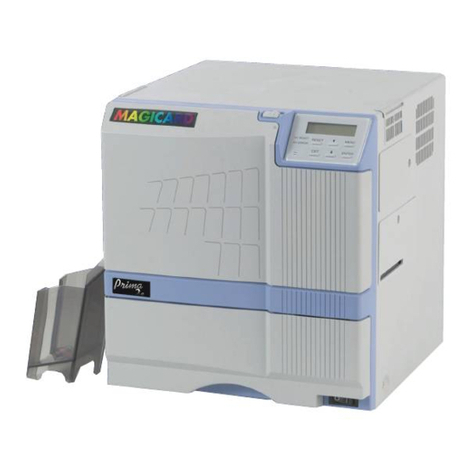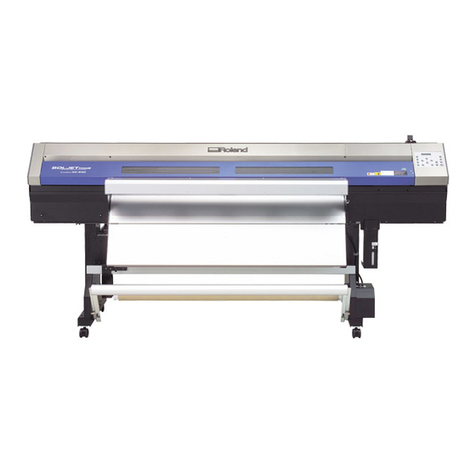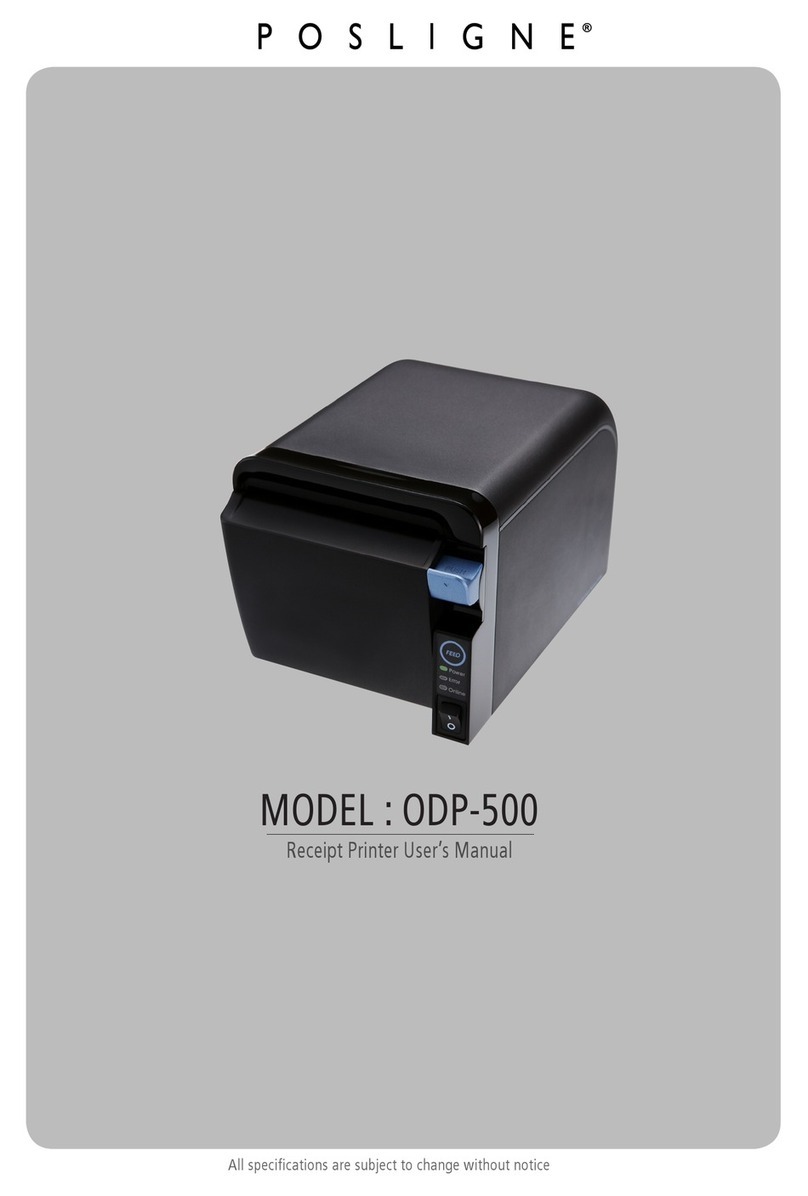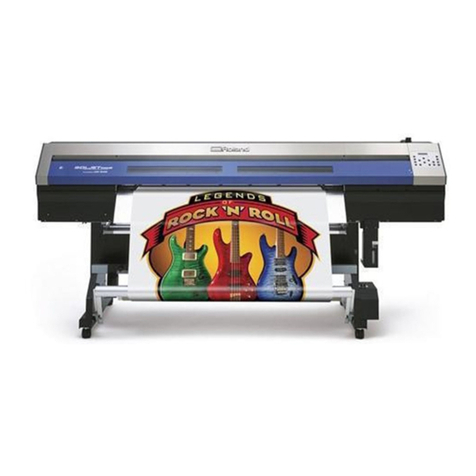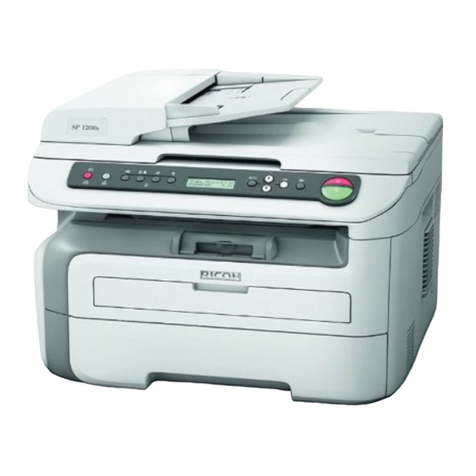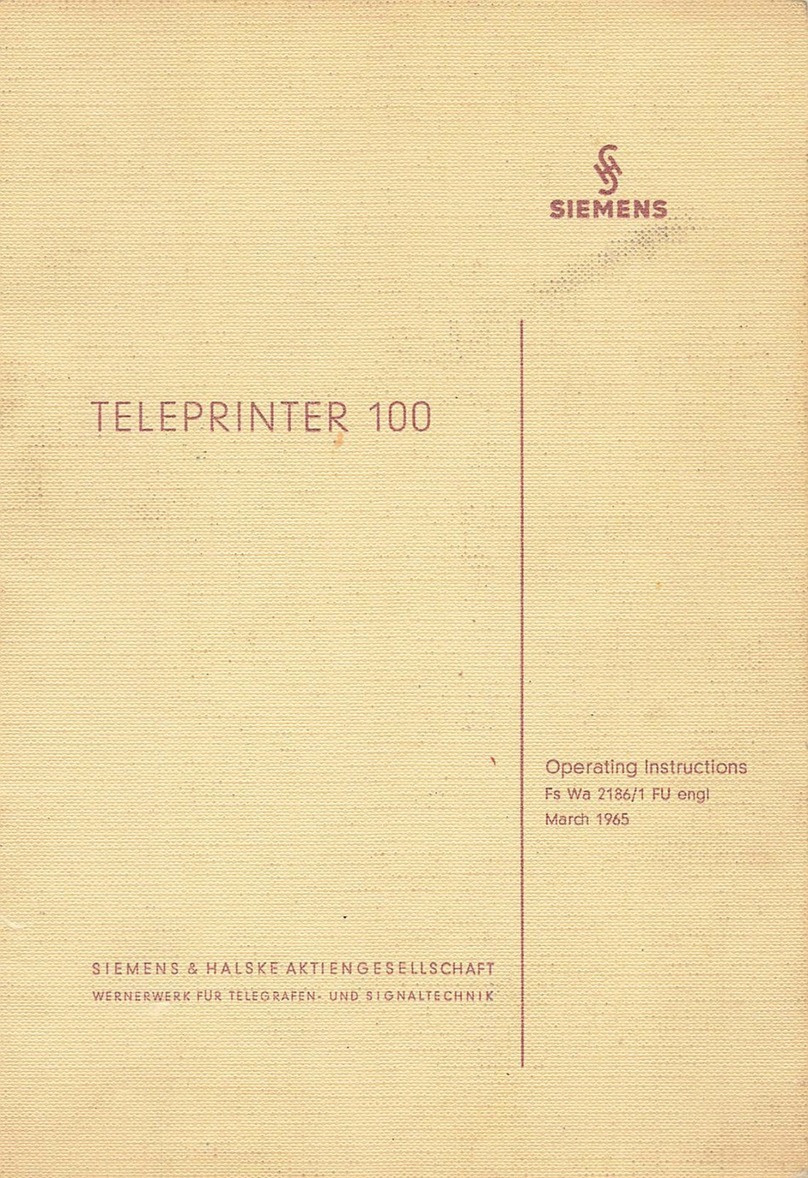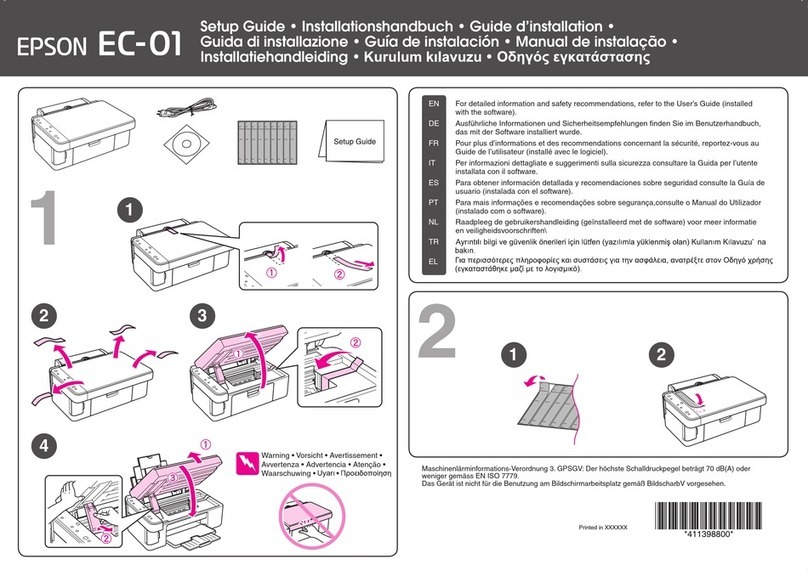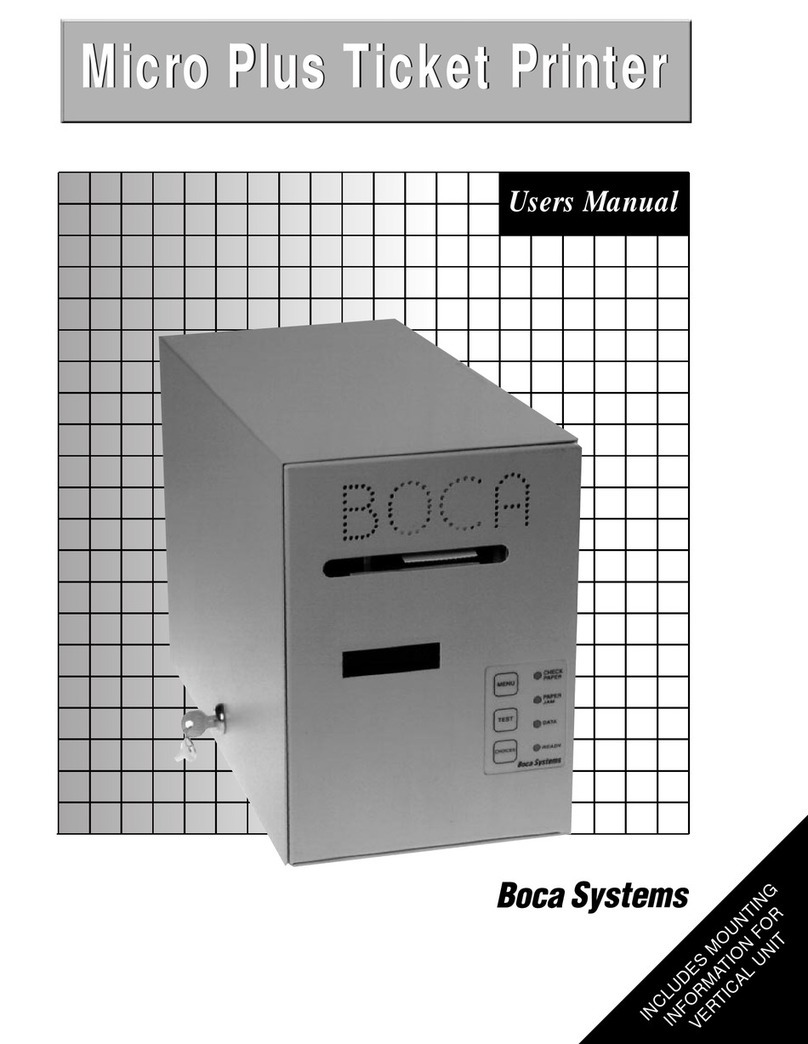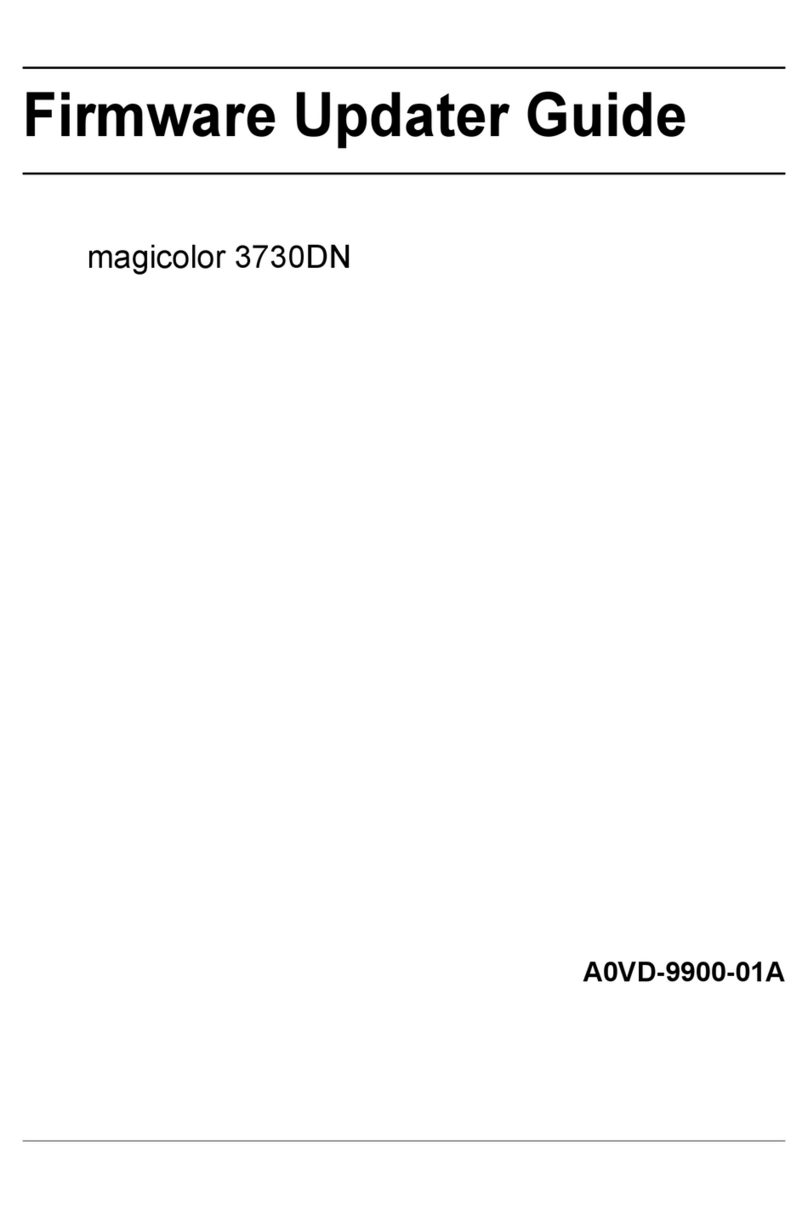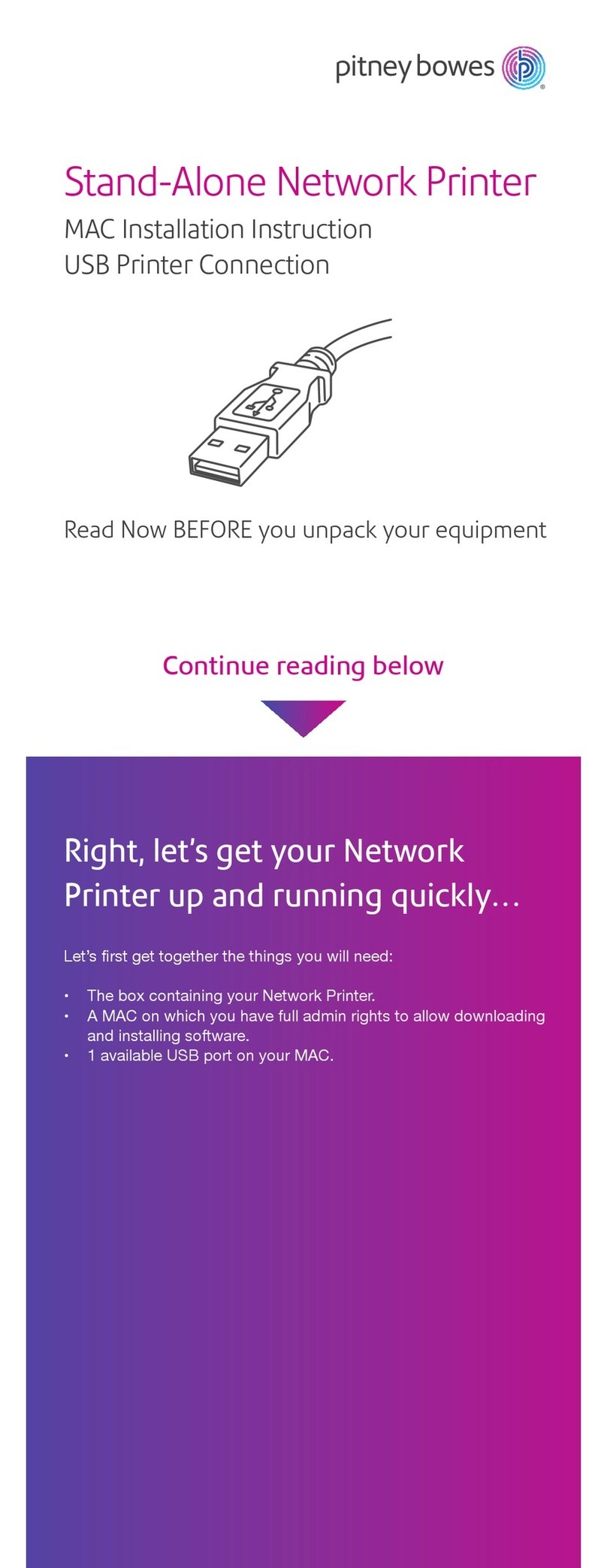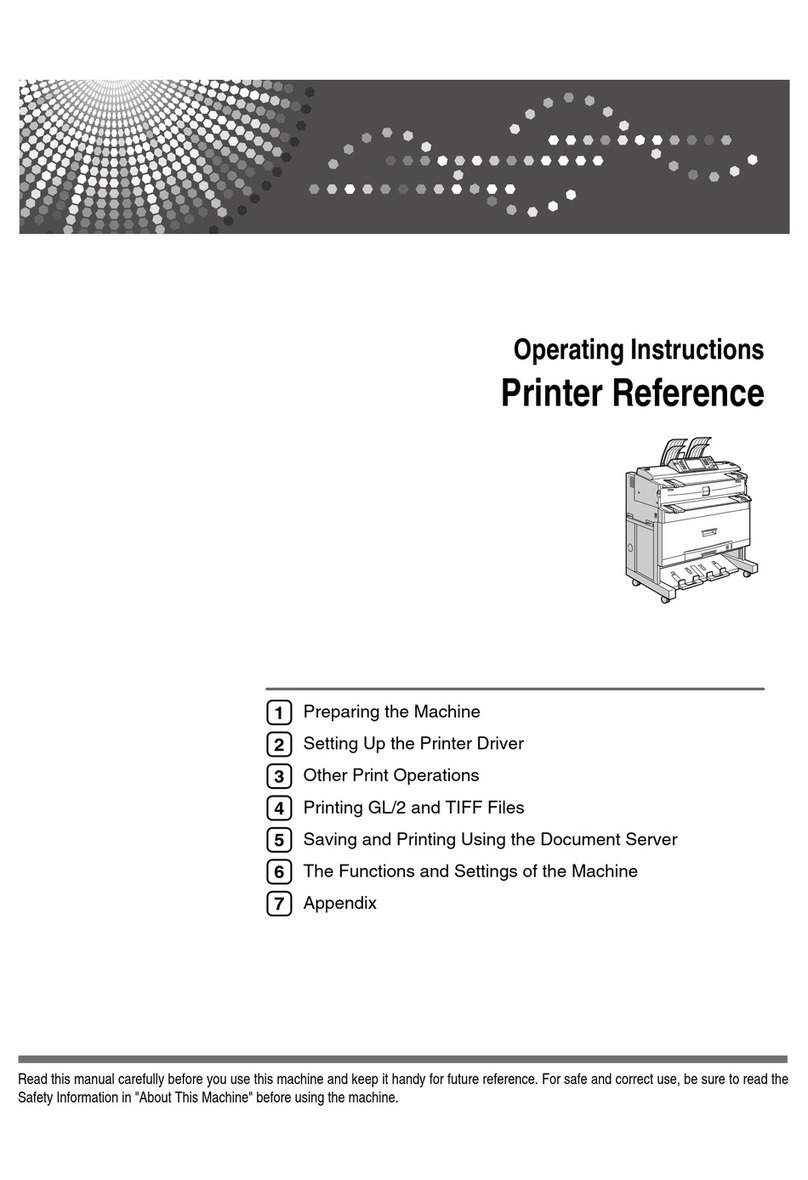gfm PS-180 User manual

Users Manual
Table Printer PS-180
GFM Gesellschaft für Microdatentechnik GmbH
All efforts have been made to ensure the accuracy of the contents of this manual at the time of press.
However, should any errors be detected, GFM would greatly appreciate being informed of them. he
above withstanding, GFM can assume no responsibility for any errors in this manual.
IBM/PC is trademark of International Business Machines Corporation, USA.
he contents of this manual are subject to change without notice.
Reproduction of any part of this manual in any form whatever is without GFM’s express permission is
forbidden.
All rights reserved.
Issue: March, 31., 2006
Declaration of Conformity
Document: EUPS180-ENGL
Product Name: able Printer PS-180
We declare the products conformity to the following standard
89/336/EWG (EEC) from 3.5.1989
he declaration of Conformity is based on the test report Nr. 96917from 26.9.1996.
Laboe, den 31.03.2006
....................................
CEO
© 1997, GFM
Gesellschaft für Microdatentechnik mbH
Heikendorfer Weg 35
D 24235 Laboe
www.gfm-printer.de

Table of Contents
Page
Introduction ...................................................................................... 4
Operating Precautions ......................................................................5
Changing Parameter of Serial Interface ........................................... 5
Operation of Printer ......................................................................... 6
Connecting the Printer ..................................................................... 6
Switches / Buttons / LED-Lamps ..................................................... 7
Control Codes and ESC-Sequence Codes....................................... 8
Bit-Image-Graphics Protocol .......................................................... 10
Character Set ................................................................................. 11
Data Connectors ............................................................................ 12
Specifications ................................................................................. 12
Interface Board - Dip-Switches ...................................................... 13
Interface Board - Jumper Options................................................... 13
Interface Board - iming Diagrams................................................. 14
Changing of Ink Ribbon ................................................................. 15
Changing of Paper Roll................................................................... 16
3
Introduction
4
Cover
Printer
Module
Controller
Board
Printer
Base
Power Supply
Adaptor

Operating Precautions
The printer is for use only in a room that fits for sensible
electronic parts
Please use the cable that is delivered together with the printer
Disconnect the power cable before you open the printer.
Changing Parameters for Serial Interface
Serial Interface RS232
You can change all parameters, if necessary, by using the DIP-switch
setting on the controller board.
he controller board is part of the printer module. o get to the controller
board, please remove screws from printer module and lift the printer
module carefully.
A listing of possible settings you will find on page 13.
5
Operating the printer
Interface cable
Please use the interface cable that is delivered together with this
printer.
urn off printer and analysis system before you connect these
two devices.
Please connect data line first before you connect the power
cable.
Power Connection
Please only use the power supply adaptor that is delivered together
with the printer. Other adaptors may damage the printer.
Please insert Ithe plug into a socket of the specified voltage and put
the small round plug into the printers power input.
Please connect data line first before you connect the power cable.
6

Switches / Button /LED-Lamps
Power Switch-Off
he printer has a power switch-off at the backside to turn printer
on and off.
On the front side of the printer there are two buttons:
Online/Offline Button
Is used to connect and disconnect the printers data line to the
data sender.
Paper-Feed-Button ( PF )
If you press the button the paper is pushed immediately.
his function is very helpful when you change the paper roll.
LED-Lamps
he printer has three LED-Lamps:
he green ON-LED-Lamp is on as long as the controller board
is supplied with electrical power.
he yellow Online-Lamp is on as long as the data line is
connected logically to the sender.
he red LED-Lamp is without function for this type of printer.
7
Control Codes and Escape-Sequences
Control Codes
Hex Dec Name Function
09 09 AB AB
0A 10 LF Line-Feed, advance paper one line
0D 13 CR PRIN contents of buffer, move the column pointer
to LEF MARGIN
18 24 CAN Clear buffer.
1B 27 ESC ESCAPE (--> see ESCAPE sequences section
1C +n28 FS Direction of Characters: n=1: Rotate, n=0 : Normal.
Escape-Sequences
An ESCAPE SEQUENCE is the ESC character immediately followed by the byte
or bytes as defined below to complete the sequence.
In the first column of the table below +n refers to another byte, +s refers to more
than 1 byte to be sent to complete the command sequence.
he following abbreviations are used:
NC = Number of characters per line
ND = Number of dots per inch
DL = Dot line
CL = Character line
LM = Left margin (default = 1)
RM = Right margin (default = NC)
BI = Bit-image graphics
Hex Dec Name Function
+n 05 05 ENQ Line Feed, Auto-Line-Feed mode change.
Code LF-enable Auto-LF Auto-CR
0 off off off
1 on off off
2 off on off
3 on on off
4 off off on
5 on off on
6 off on on
7 on on on
8

Escape-Sequences continued
Hex Dec Name Function
09 09 H AB to character column
+n 0C 12 FF n dots line feed
14 20 DC4 Self est
+n 20 32 (sp) Add n dot space between characters.
+n 24 36 $ AB to dot position. Range n = 1 RM * 6.
Command ignored if n is out of range
2A 42 B same as ESC-'K'.
+n 2D 45 - Underline Mode. n = 0 is off, n = 1 is on.
30 48 0 Set line spacing to 9 DL/CL (default)
31 49 1 Set line spacing to 8 DL/CL
32 50 2 Set line spacing to 12 DL/CL
33 51 3 same as ESC-'A'.
40 64 @ Reset. Initialise Printer
+n 41 65 A Set line spacing to n DL/CL. n0 through 8 is
treated as n=8. n09 through 127 is treated as n.
n>127 is treated as (n-128)
48 72 H 80 Characters / line mode
+n 4A 74 J fast Paper Feed n DL. he column counter is
not changed
4B 75 K Bit Image Mode. See separate section Bit-
Image Graphics
53 83 S Double Strike
+s 58 88 X Set Margins. +n1 & n2 = smaller => left margin,
bigger => right
+s 5B 91 [ +n1, n2 set Character Size
62 98 b Uni-directional printing
66 102 f Draft mode
68 104 h 40 Characters / line mode
70 112 p Fine Resolution mode
+n 72 114 r Revers/Normal video (n=1/n=0).
73 115 s Normal strike
+n 7A 122 z Printing Direction:
Invers/Normal Printing (n=1/n=0)
9
Bit-Image-Graphics Protocol
he ESC K protocol is similar to EPSON line printers with limitations due to the
fact that the printers used to have a fixed number of dot positions (ND). If more
data is specified than the printer being used is capable of printing, the first ND (left
part) will be printed and the remaining columns of data will be ignored (truncated
to ND). If the margins are changed with the ESC X +s command then the effective
ND is also changed.
Protocol: ESC K n1 n2 (n2*256 + n1 bytes of data) PRIN
Example: 1Bhex K 16dec 1dec (272 bytes of data) 0Dhex
will print 272 columns of BI -IMAGE graphics (truncated at
ND columns).
If the number of bytes = N, the values of n1 and n2 are:
n1 (lsb) = the remainder of dividing N by 256 (N MOD 256). he range is
0dec through 255dec but any number larger than the number
of dots per line will be truncated.
n2 (msb) = the integers quotient of dividing N by 256 (IN (N/256)). Any
data for n2 > 0dec will be truncated.
he character line spacing remains in effect so if the graphics is desired to be
printed on adjacent character lines with no blank dot lines between the graphic
lines, the line spacing must be set by sending ESC 1 (8 DL/CL).
he first byte of data will be printed in the current dot position as a vertical group
of 8 dots defined by the data byte. he most significant bit of the byte will be
printed at the top of the group of dots and the least significant bit will be printed at
the bottom of the group of dots. (If the appropriate bit is a logical 1, a dot will be
printed. If the bit is a 0, nothing will print at that position.) he second byte will be
printed in the next dot position etc., etc., until the byte n1 + (n2 x 256) is printed.
Printing does not occur until a PRIN command is received or until more than ND
bytes of data are received.
Graphics data and ASCII text data can be printed on the same line by not printing
until all required data is in the printer's input buffer. Printing does not occur until a
PRIN command is received or if the ND counter gets greater than the ND for the
printer.
his family of printers has solenoids mounted horizontally with each printing part
of the dot positions for each dot line. Paper is automatically advanced one dot line
as each dot line is printed. he motor is turned off any time the next line of data is
not ready to be printed when the printer completes the previous character line.
he motor must be turned on for one shuttle to get back in sync before any
printing can be done, which causes the paper to feed one dot line. For graphics
mode this means that DA A MUS BE SEN A A FAS ENOUGH RA E HA
I S AYS AHEAD OF HE PRIN ER O AVOID BLANK DO LINES FROM
OCCURRING between each 8 dot lines of BI data.
10

Character Set
An IBM Character Set is installed with some additional characters.
Controller Board (ST-100-X)
20hex thru FFhex IBM/PC character set
0 1 2 3 4 5 6 7 8 9 A B C D E F
2x ! " # $ % & ' ( ) * + , - . /
3x 0 1 2 3 4 5 6 7 8 9 : ; > = > ?
4x @ B C D E F G H I J K L M N O
5x P Q R S T U V W X Y Z [ \ ] ^ _
6x ` a b c d e f g h i j k l m n o
7x p q r s t u v w x y z { | } ~ ▓
8x Ç ü é â ä à á ςê è é í î ì Â À
9x ÉæÆ ô ö ò û ù Ÿ Ö Ü ď £ ¥ ₧ ₣
Ax á í ó ú ň Ň ˜ ˚ ¿┌ ┐ ½ ¼ ; « »
Bx ░ ▒ ▓ │ ┤ ╡ ║ ╖ ╕ ╣ ║ ╗ ╝ ╜ ╛ ┐
Cx └ ┴ ┬ ├ ─ ┼ ╞ ╟ ╚ ╔ ╩ ╦ ╠ ═ ╬ ╧
Dx ╨ ╤ ╥ ╨ ╘ ╒ ╓ ╫ ╪ ┘ ┌ █ ▄ ▌ ▐ ▀
Ex α β Γ π Σ σ μ ν Φ θ Ω δ ω ώ Є п
Fx ≡ ± ≥ ≤ ⌠ ⌡ ÷ ≈ ° • ∙ ∫ ⁿ ² ■ ÿ
For controller with German character set the following table is valid:
Address: 5B 5C 5D 7B 7C 7D 7E
Character : Ä Ö Ü ä ö ü ß
he self test is printing this version: 189-2.00
11
Data Connectors
Connector serial RS232 Version
DB-9, female - RS232 pinout compatible
Pin Name E/A Funktion
1 D R A connected to PIN 8
2 XD A RS232 ransmitted Data (no function)
3 RXD E RS232 Received Data
4 N.C. -
5 Masse - Logic Ground
6 D R A connected to PIN 8
7 R S A Pulled-up
8 D R A Hardware Handshake Line
9 N.C. -
Connector parallel Centronics Version
DB-25, female - Centronics pin-compatible.
Pin Name E/A Funktion
1 /S B E Active LOW-Pulse to send data to printer
2 D0 E ASCII Datenbit 0 (lsb).
3 D1 E ASCII Datenbit 1.
4 D2 E ASCII Datenbit 2.
5 D3 E ASCII Datenbit 3.
6 D4 E ASCII Datenbit 4.
7 D5 E ASCII Datenbit 5.
8 D6 E ASCII Datenbit 6.
9 D7 E ASCII Datenbit 7 (msb).
10 /ACK A Activer LOW-Pulse, when data is accepted.
11 BUSY A HIGH-level when printer cannot accept data.
12 PE A HIGH-level when printer is out of paper (not in use).
15 /ERROR A Normally HIGH, LOW = Error condition
16 /INI E LOW-Pulse resets the printer.
Hint: Pin 13 is set to +5 Volt. Pins 14, 17 to 25 are grounds.
12

Interface Board
Dip-Switch Settings (serial Version) ST-100-S2
Pos On = Off = Function
8 Reverse Printing Normal Printing Printing direction
7 M-19X M-16X,18X ype of printer
6 7 Bits 8 Bit Data Bits
5 Odd Even PARI Y
4 Enable Disable PARI Y.
4 2 Stop bits 1 Stop bit Stop bits
3 BR3
2 BR2 - see Baud Rate able
1 BR1
NO E: 7 DA A BI S, NO PARI Y an 1 S OP BI is NO a valid
combination to send to the printer
Baud Rate Table
BR1 BR2 BR3 BAUD
On On On 150
Off On On 300
On Off On 600
Off Off On 1200
On On Off 2400
Off On Off 4800
On Off Off 9600
Off Off Off 19200
Jumper Options E3 and E4 (parallel version ST-100-C)
E3: must be set short for M-19X printers
E4: must set short form normal printing direction
13
Parallel Timing Diagram (Parallel Interface Centronics)
DATA DA A VALID
<------ su ------> <----- hold ------>
= 50 nSek
(min.) = 50 nSek (min.)
/STB
/ACK
BUSY
su = Set-Up- ime Data valid until /S B LOW = 50 nanoseconds (min.).
hold = Hold- ime /S B LOW until DA A changes = 50 nanosesconds
(min.). /S B-width = 20 nanoseconds (min.). /ACK-width = 0.5 microseconds
(nominal). /S B LOW until BUSY HIGH = 40 nanoseconds (nominal).
Serial Timing Diagram (serial Interface RS-232)
st d0 d1 d2 d3 d4 d5 d6 d7 p sp
<--------------------- 1 character time ------------------------->
st = Start bit. sp = Stop bit. p = Parity bit (optional). d0 through d7 = Data bits.
d7 is optional unless needed for graphics. he width of each bit depends on the
baud rate.
NOTE: he data byte must be 10 bits minimum length. 7 DA A BI S, NO
PARI Y and 1 S OP BI is NO a valid combination to send to the printer.
NOTE: Polarity shown (S AR BI high and S OP BI low) is for RS232 voltage
levels of serial data stream(± 12 Volt).
14

Changing of Ink Ribbon
15
Changing of Paperroll
Table of contents
